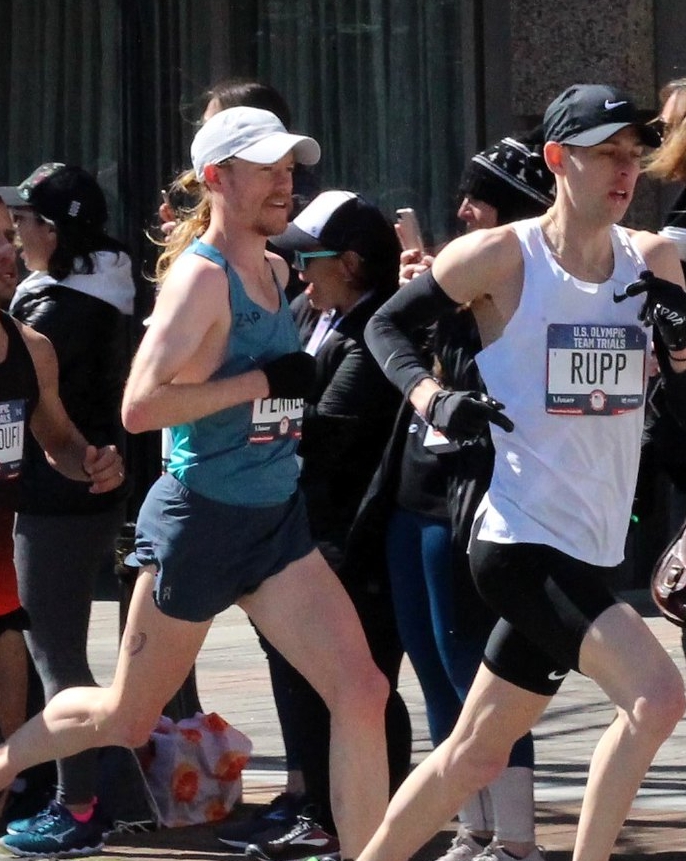ZAP Endurance athlete Tyler Pennel had a breakout moment at the 2016 Olympic Marathon Trials. After surging to the front in the latter stages of the race he went on to finish 5th and stamp himself as one of America’s preeminent marathoners. It may surprise many that his marathon training plan began only 10.5 weeks before race day.
The duration of marathon buildups can vary dramatically depending on the individual and their circumstances. Another ZAP Endurance athlete, Joanna Thompson, had a career defining moment of her own at the 2018 Boston Marathon where she placed 10th in the elite field. Her buildup for that race was significantly longer than Tyler’s Olympic Trials buildup. However, it put her in the best position possible on Marathon Monday. There are a number of individual factors that affect how long you should spend preparing for a marathon to be your best on race day.
Assess Fitness
The first thing to consider is how fit you are before you start your marathon training plan. Tyler had a full training cycle focused on shorter distance races before his . His final race of a 5-race sequence was 13 weeks before the Olympic Marathon Trials. He was in peak fitness at that point.

After a short rest cycle he was in full marathon training 10 weeks out from the Olympic Trials. In Joanna’s case, she was coming off a fall dealing with the injury bug. As winter approached she was just getting back into the full swing of training. As a result, her Boston buildup took closer to 20 weeks. In general, the better shape you are in before you start your marathon buildup, the shorter your buildup can be. Fitness however, is not the only factor to consider.
Training Volume
Another important aspect to consider is training volume, which as you may expect, has a strong correlation to fitness. The closer your typical training volume is to your marathon training volume, the shorter your buildup can be. During Tyler’s fall training cycle preceding his marathon training plan, he was still running 85-90% of the his marathon volume. And that’s despite training for races between 10k and 10 miles in length. But if the discrepancy between your year-round training mileage and marathon training mileage is quite a bit larger don’t worry. After all for pro runners, running is their job.
Building Volume
Here at ZAP we utilize a 2 weeks up / 1 week down philosophy. This means we have 2 weeks of running at higher volume followed by 1 week where the volume is 10-15% less. This allows for proper recovery within the training program and better adaptation through the process. Let’s say your typical training is 80% of your marathon training volume. Then the first 2 weeks of marathon training should be spent increasing your volume 10% each week to reach full marathon training volume.
If your typical mileage is far less than 80% of your maximum marathon volume the same rule applies. Plan on increasing your mileage 10-12% on each “up” week until you reach your goal marathon volume. For experienced marathoners with performance goals, simply count back the number of weeks to where you enter the final 8-10 weeks of training having reached peak volume. From that point you can add more intense workouts into your training.
For newer marathoners or those whose primary goal is to complete the distance, aim to reach peak volume 5-8 weeks out from the race. Use the same formula of adding 10-12% to your weekly mileage on the “up” weeks. Include a down week every third week in order to maximize training gains and reduce the risk of injury.
Long Run Length
In addition to overall training volume, it is important to consider the length of your long run. If you are regularly running 70% of your marathon volume with a 16-mile long run your buildup should be shorter than if you were running 70% of your marathon volume with an 8-mile long run. Similar to the formula for increasing weekly mileage, plan to increase the long run by no more than 2 miles on each “up” week. The aim is to enter the final 8-10 weeks having completed at least one run of 18 miles or more. Depending on your starting point for both the long run distance and weekly mileage you may need to spend more time building one over the other. Whichever takes the most time to build should be the basis for determining how long your buildup should be.
Recovery Before Buildup
In Tyler’s case before the 2016 Olympic Trials he was incredibly fit 13 weeks out from the race when he finished 2nd at the US 12k Championships. However, the next 2.5 weeks of training were very light in order to recover before beginning his marathon training plan. If he had gone straight into marathon training he would have peaked two months before the marathon and been over trained by race day. Proper recovery between training cycles is critical to not just being prepared, but being prepared at the right time.
Over-preparation is a common mistake runners make when it comes to marathon training. The marathon distance can be intimidating, even for veteran marathoners. Oftentimes the instinct is to spend too much time in marathon preparation. Feeling fully prepared 6-8 weeks before the race may help ease your anxiety but it doesn’t help you be your best on race day.
Take into account your weekly mileage, long run mileage, and fitness before the marathon buildup. Incorporating these factors into your plan will help you be your best on race day.
Interested in Learning more about ZAP’s 1-on-1 Coaching Services? Click Here.
